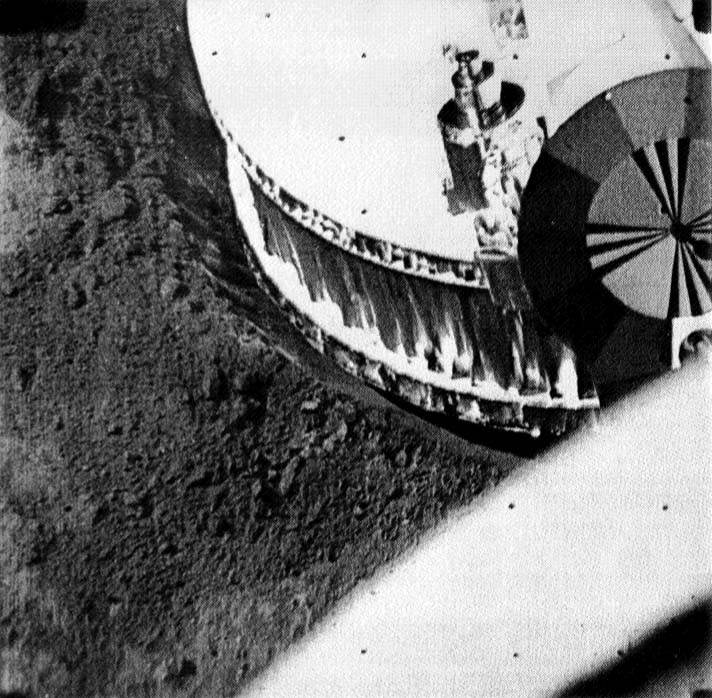
Jan 22, 2014
By Victoria Portway
Today, January 22nd, is Museum Selfie Day. Museums everywhere are joining in on the selfie phenomenon, one that in 2013 earned “selfie” Oxford Dictionaries' word of the year and inspired an exhibition examining the cultural significance of digital self-expression. The National Air and Space Museum is a selfie canvas every day and we appreciate the many inspiring and often highly entertaining photos that visitors share of themselves in front of historic air and spacecraft. As we pause to celebrate the self-portrait of the digital age, Museum staff (and their kids!) decided to get in on the action and demonstrate some of the prime selfie vantage points at our two museum locations. At our Museum in Washington, DC, one of the most popular self-portrait stops is in front of The Space Mural — A Cosmic View by Robert T. McCall. The artist painted the mural on the lobby wall before the Museum opened in 1976. It remains an iconic visual and a natural magnet for visitor photos to this day. The mural is also large enough and high enough to accommodate a variety of creative selfie angles.
The Stewardess Requirements display in the America by Air exhibition is a convenient mirror selfie option. Visitors learn about the strict standards that stewardesses had to meet in the 1950s. Would you qualify? Check yourself in the mirror and snap a selfie.
Check your appearance at the stewardess image check mirror in the America by Air exhibition.
The model of a full Space Shuttle stack in Moving Beyond Earth is also a popular selfie backdrop. Not to scale, of course.
The expansive Steven F. Udvar-Hazy Center in Chantilly, VA offers an abundance of selfie options. The overlook that greets visitors upon entering the Udvar-Hazy Center provides a closeup view of the shark teeth on the nose of the Curtiss P-40 Warhawk, braved here by Archives museum specialist Allan Janus.
Allan Janus, museum specialist in our Archives Department, poses with the Curtiss P-40 Warhawk in honor of Museum Selfie Day on January 22, 2014.
Or, you can go long to capture the Lockheed SR-71 Blackbird and Space Shuttle Discovery in the background.
A panoramic view from the Boeing Aviation Hangar Overlook. This is the first view that greets visitors as they enter the Udvar-Hazy Center. So many selfie options.
A selfie with Space Shuttle Discovery is a must. At the nose and back are very popular selfie spots, but from the top of the south staircase you can get the entire spacecraft behind you. Or, take a photo from the balcony to get your face cozied up next to the “Discovery” name on the orbiter’s starboard side.
Archives museum specialist Allan Janus poses with Space Shuttle Discovery for Museum Selfie Day.
Not Your Typical Selfie Here is a rare selfie. In 2007, staff volunteered to model for plaster casts needed in our new America by Air exhibition. Exhibits designer Jennifer Carlton snapped a photo of educator Tim Grove as he took a selfie with the plaster cast of himself. So meta.
Tim Grove takes a meta selfie with a plaster cast of himself on display in the America by Air exhibition. Tim Grove is Chief of Museum Learning at the National Air and Space Museum in Washington, DC. Exhibits designer Jennifer Carlton snapped the photo of Tim taking a photo of himself.
If you want to go beyond the common selfie, or you happen to be a shy selfie taker, a shiny airplane or astronaut suit visor might be just the trick. We have plenty of reflective surfaces that enable a covert selfie.
Join in! Snap a photo of yourself in our museum or dig up any selfies you’ve taken here in the past and share them via social media using #MuseumSelfie. We’ll be watching for yours and sharing more of our own. When Did The Aerospace Selfie Take Off? If you thought the aerospace selfie was relatively new, take a look at these high flying selfies that beg the question, when was the first aerospace selfie taken? One of the most famous images of the Apollo program is also a selfie of Neil Armstrong reflected in Buzz Aldrin’s visor.
This photograph was taken during Apollo 11, the first manned mission to land on the Moon. The photograph shows lunar module pilot Buzz Aldrin standing on the lunar surface. Apollo 11 commander Neil Armstrong, who took the photograph, and the lunar lander can be seen reflected in Aldrin's visor. This image is one of the most popular photographs taken during the Apollo program.
Few may be able to top this F-16 pilot selfie, snapped while deploying flares and rolling the aircraft. Source: @DuffelBlog What about spacecraft? Selfies are actually common practice for landers as a means to verify that they landed safely. Surveyor 1 was the first U.S. spacecraft to make a soft landing on another world in June of 1966. The first photos it returned to Earth were partial selfies of its footpad on the Moon.
 Surveyor 1 footpad selfie, on the Moon! Photo credit: NASA
Surveyor 1 footpad selfie, on the Moon! Photo credit: NASA
Do you have a favorite historic aerospace selfie? Share it with us!

We rely on the generous support of donors, sponsors, members, and other benefactors to share the history and impact of aviation and spaceflight, educate the public, and inspire future generations. With your help, we can continue to preserve and safeguard the world’s most comprehensive collection of artifacts representing the great achievements of flight and space exploration.
We rely on the generous support of donors, sponsors, members, and other benefactors to share the history and impact of aviation and spaceflight, educate the public, and inspire future generations. With your help, we can continue to preserve and safeguard the world’s most comprehensive collection of artifacts representing the great achievements of flight and space exploration.